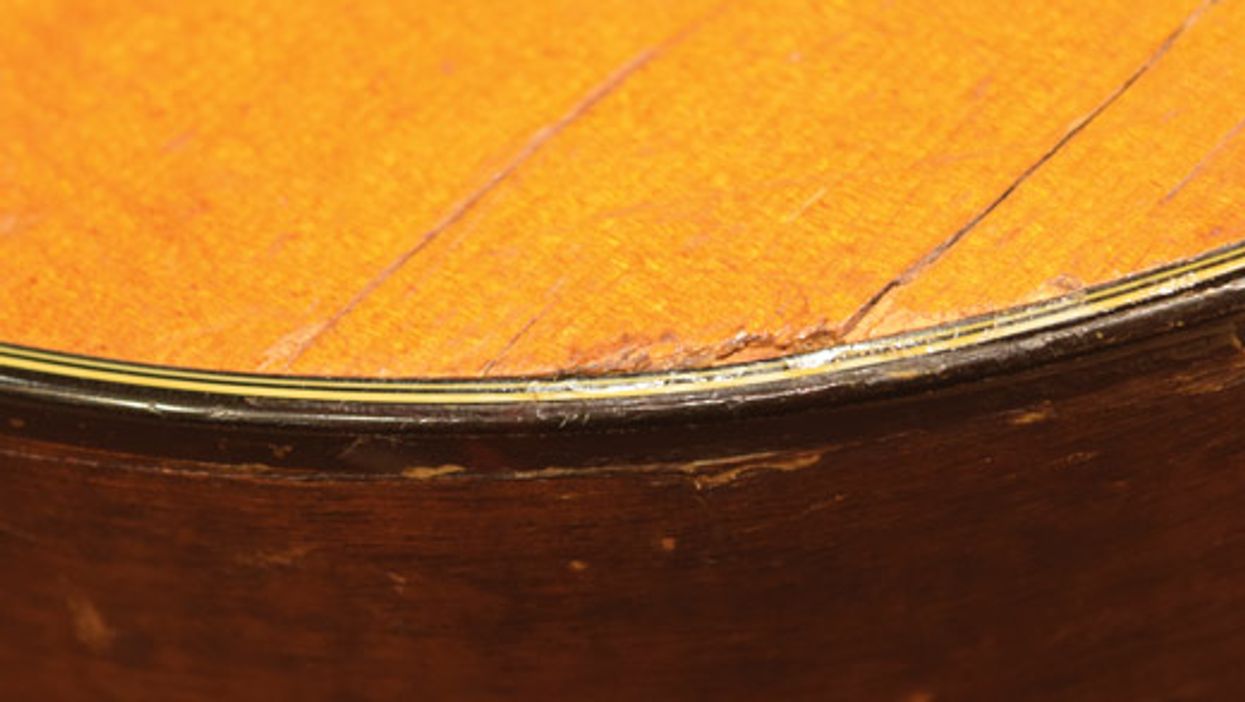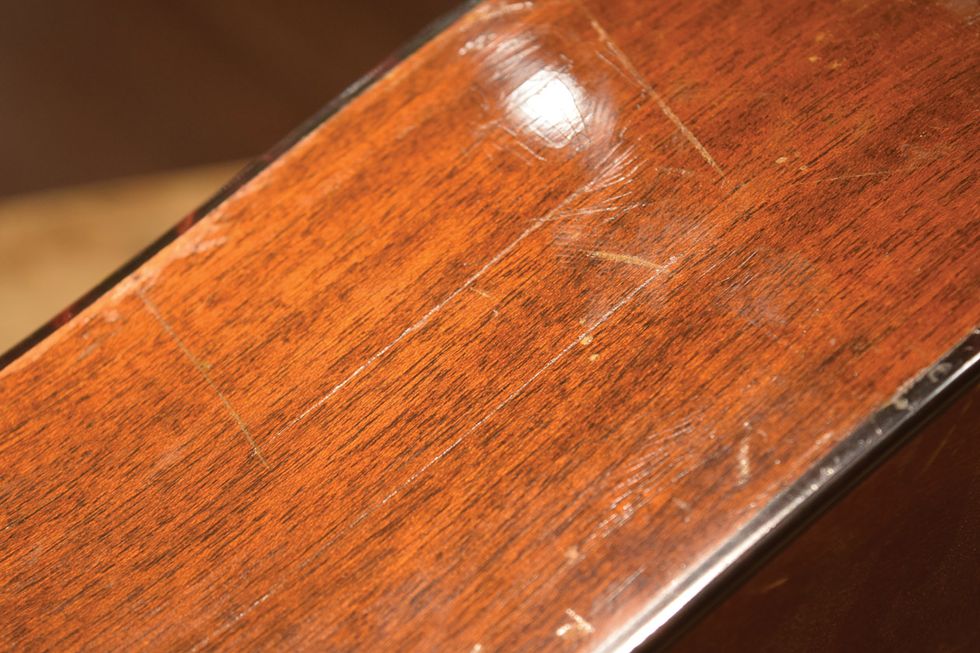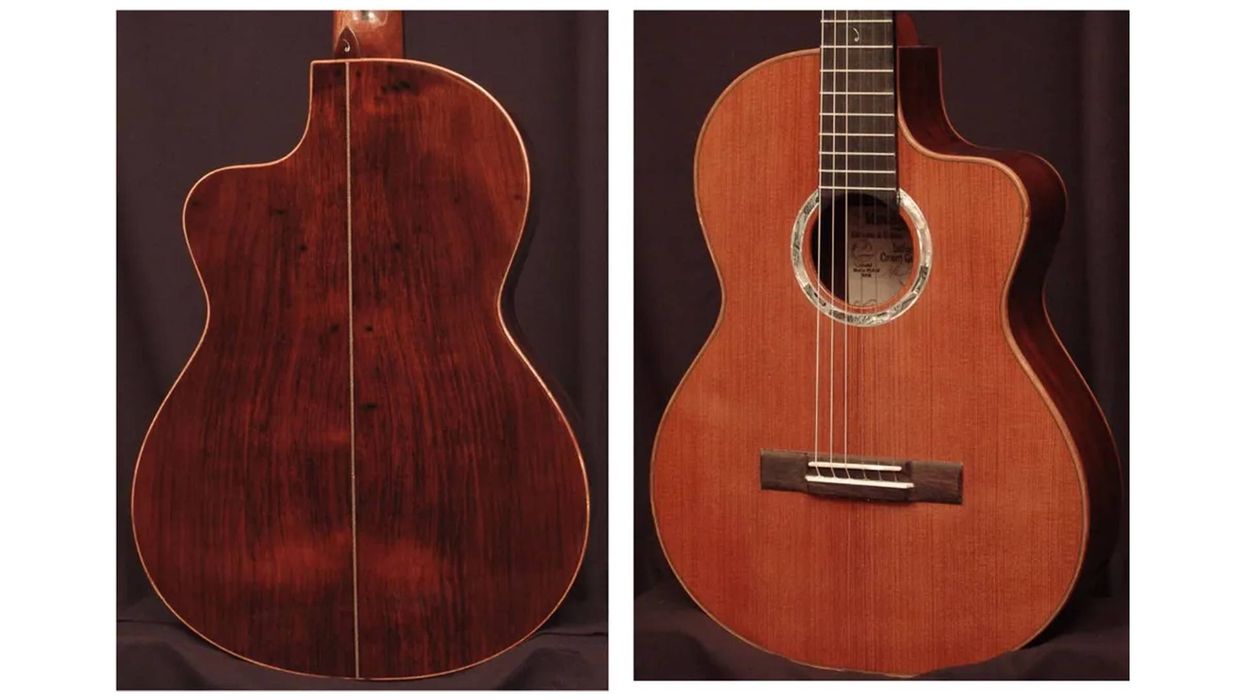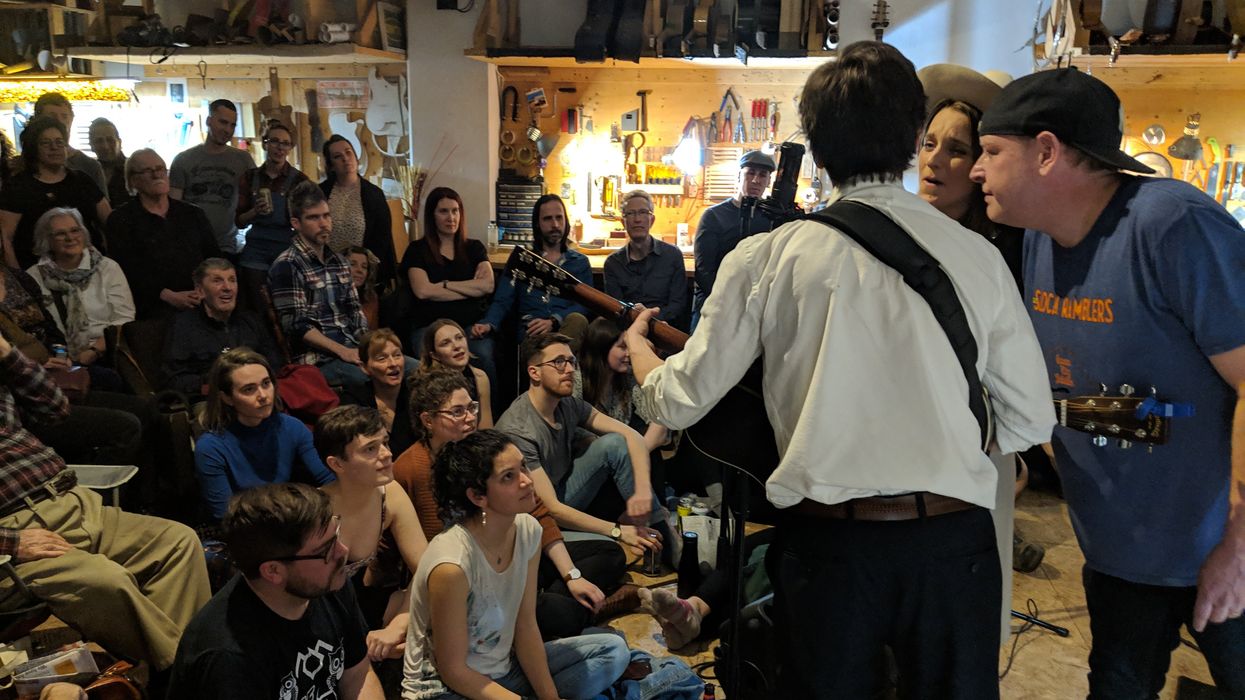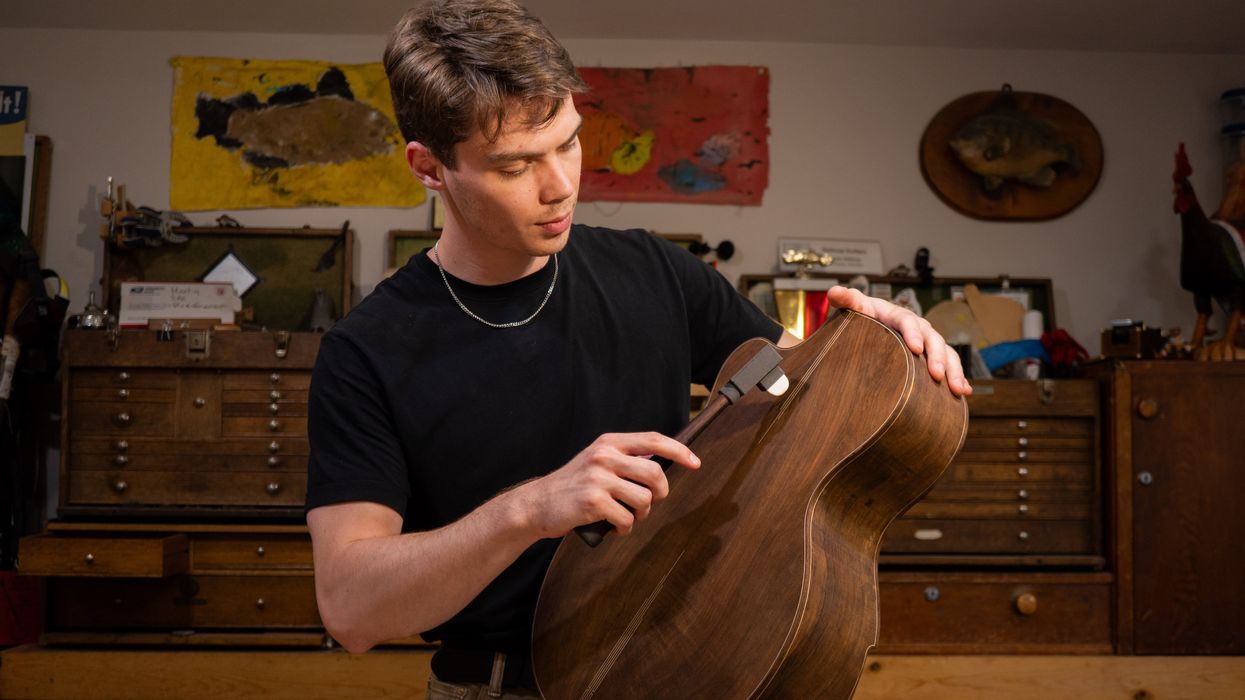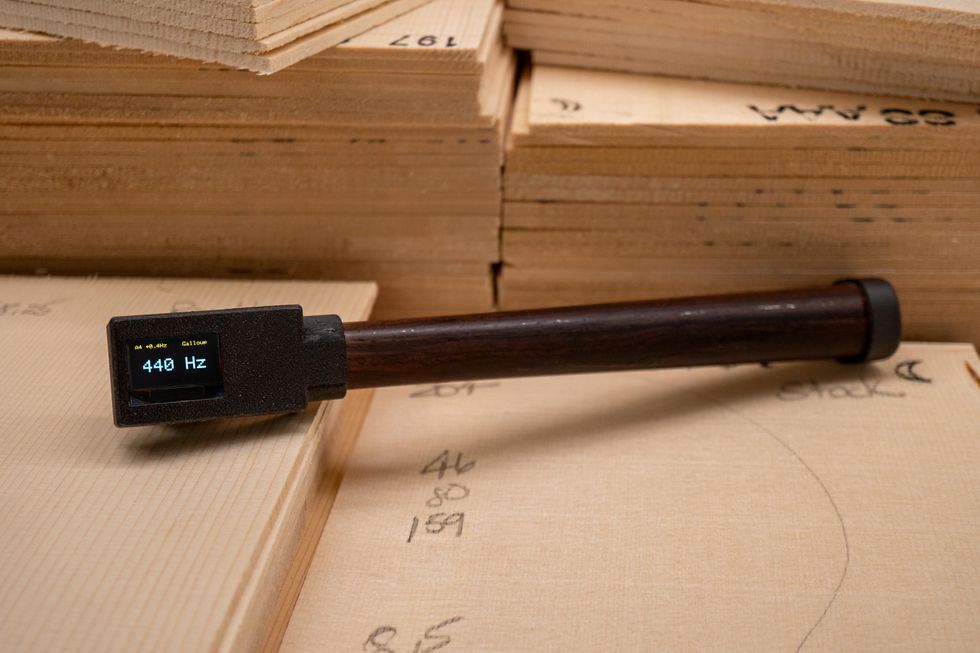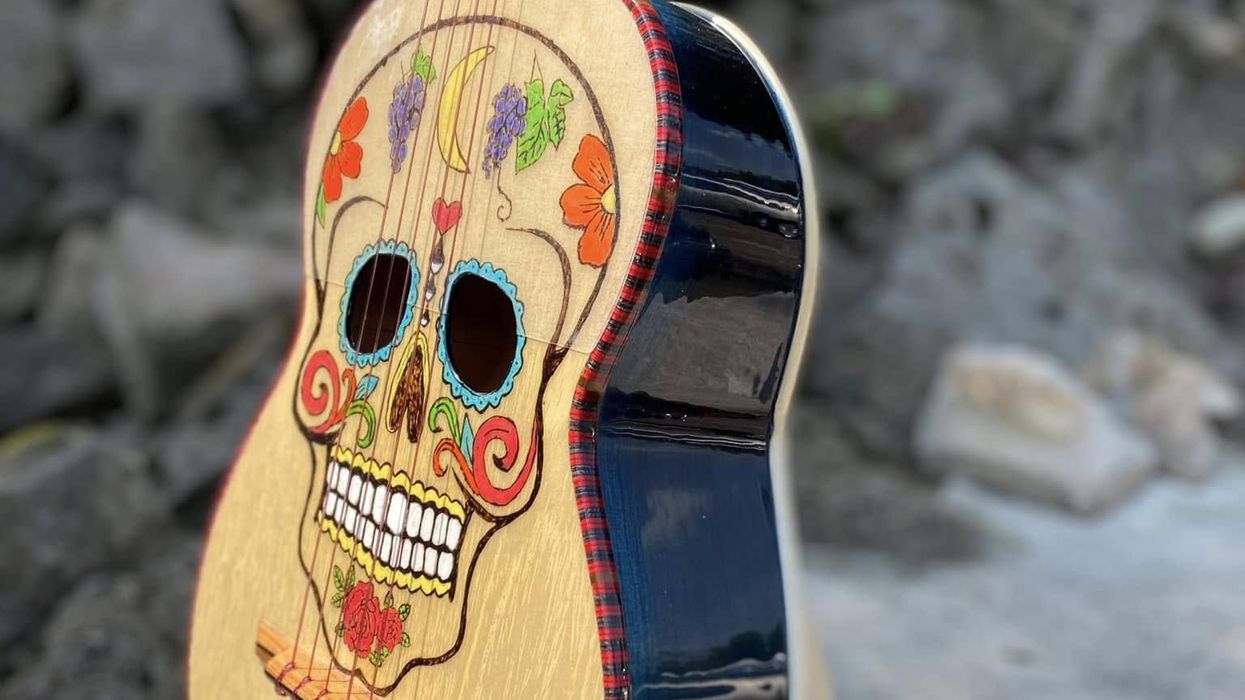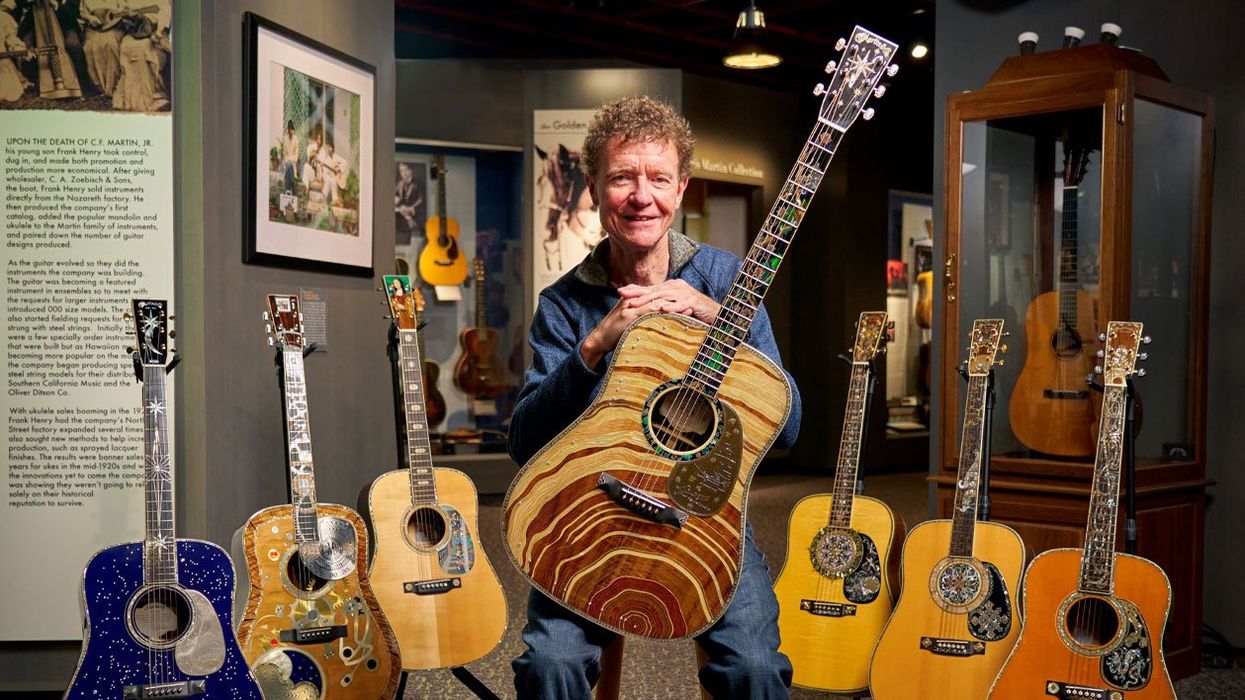In my last column [“Humidity—Friend and Foe," March 2018], we defined the parameters of the “safe humidity zone." And its importance was stressed because humidity control is the single most crucial step a guitar owner can take to protect instruments. But wait! There is more sad news. Stuff is going to happen to your guitars, and discovering a crack can be absolutely heartbreaking. Fortunately, damage is often repairable to keep your instrument stable and ready for action, but understanding what you are dealing with is key to making the best decisions during the repair process.
Lack-of-humidity cracks and impact cracks are without a doubt the two most common types. Lack-of-humidity cracks typically run along the grain of the wood. As wood shrinks in low humidity environments, it eventually reaches a point where the wood can stretch no further and, well, it cracks. Guitars with lack-of-humidity cracks generally show up in my shop around mid-October, which is about the time people turn on the heat in their homes and the relative humidity drops below 40 percent. These cracks aren't hard to spot. Most often they're located just behind the bridge on the top, but they can show up in other places. Another defining factor of lack-of-humidity cracks is separation in the guitar's top—as much as 10 to 15 thousandths of an inch.
The fix is in. Impact cracks, which occur when a guitar takes a hit, are not open. They do, however, typically break the wood along the grain as well. (Photo 1). And most of the time, impact cracks go right back together with minimal effort (Photo 2). There's a scenario where the guitar has a lack-of-humidity crack that separated in the winter but closed back up in the summer, and has the appearance of an impact crack. Regardless, these cracks can be repaired the same way as impact cracks.
So what can you do if an unnerving crack shows up on your guitar? The first and most important thing to do is not freak out. Whether the crack is caused by humidity or by impact, there is no immediate danger to the guitar. Second, if you notice a crack, your first instinct may be to touch or rub it. Tip: Don't do this! By touching or rubbing the crack, you are working dirt and oils into the area, and this can make things much more difficult when gluing it back together. For lack-of-humidity cracks, you should take quick action and re-humidify your guitar with a soundhole humidifier as soon as possible. This will—more often than not—close the crack. If you ignore this scenario, however, the wood could take a memory over time and will be much more difficult to repair down the road.
Visit the doctor. The next step is to see the repairperson. Between the two of you, you should identify what type of crack you are dealing with and determine what the next best course of action will be. If it's an impact crack, a simple re-gluing usually does the trick with no need for further action.
A qualified repairperson can often fix impact cracks with minimal effort and no need for backers or cleats.
In the case of a lack-of-humidity crack, the technician will usually continue re-humidifying the guitar until the crack closes. Only then will the crack be ready to be re-glued. Again, most of the time, the glue will be enough to hold the wood together. But a qualified repairperson should advise you on how to better humidify your instrument to prevent the crack from returning in the future.
In either case, the glue seals the crack to protect the wood once it's repaired—at least from a structural and sealed standpoint. But now you are likely thinking about the finish and if the repaired crack needs inner support. Here's where I'm going to suggest that you relax and weigh your options. Both backers and finish touch-ups are what I consider to be phase two of the process, and are not always a necessary step in a repair.
When touch-up work on the finish is performed, it's done to try to make the crack look better. It does not make it more structurally sound, and unless the guitar is almost brand-new—when finishes are more easily re-bonded—a finish touch-up on an older instrument generally looks, well, terrible. As someone who has been around world-class acoustic guitars and guitarists for over 40 years, a cleanly repaired crack is what I'd prefer to look at. As for backers or cleats, they are often not necessary to further stabilize the already re-glued and stable crack. So be sure to discuss this with repairpersons to ensure they aren't making any moves that can't be undone once in place.


